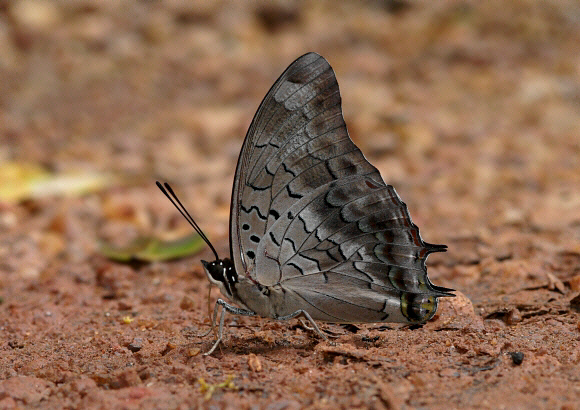
Introduction
The Charaxinae are a group of robust, medium to large Nymphalids characterised by having a rapid and powerful flight, stout bodies, falcate apexes, and a habit of feeding at dung and carrion. They are represented in the neotropics by genera including Consul, Memphis, Prepona and Agrias; in the Oriental and Australian regions by Polyura and Charaxes, and in Africa by Charaxes, Euxanthe and Palla.
There are 179 Charaxes species in the Afrotropical region, one of which – jasius, extends its range as far north as the Mediterranean coast of Europe. Most are forest-dwellers but several are adapted to savannah and arid Acacia thorn scrub habitats.
Most Charaxes species are black on the upperside, with bands of either white, orange or blue. The etheocles group however are almost entirely black above, and virtually devoid of markings. There are between 15-20 species in the group but the taxonomy is confused, as there is great similarity between the species.
Charaxes etheocles is a common species, found throughout the African forest block from Senegal to southern Sudan, Ethiopia and south to western Tanzania and northern Zambia.
Habitats
Charaxes etheocles is found in primary and secondary rainforests but is quite tolerant of habitat degradation.
Lifecycle
As with other Charaxes species, the egg is barrel-shaped and carries a series of ridges and keels around the upper part. It is laid singly on leaves of the foodplant. The caterpillar feeds on Albizia, Bandeiraea, Cathormion, Dalbergia, Entada and Griffonia ( Fabaceae ), and occasionally on Scutia ( Rhamnaceae ) and Celtis ( Ulmaceae ).
Adult behaviour
Males are usually encountered singly when feeding at dung or fermenting fruit on the forest floor.
